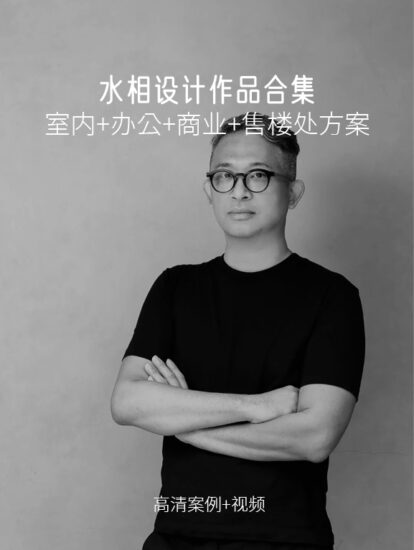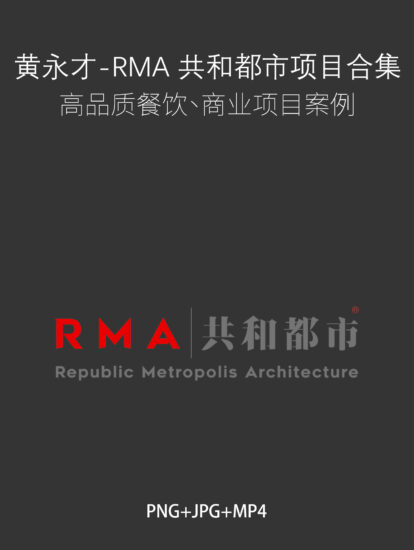LOFT中國感謝來自 中歐智能建築設計研發中心 的辦公空間項目案例分享:
通常來說,辦公室的設計是按照傳統的方格網及常規需求,劃分出大小各異的空間:辦公室、會議室、工作間和集散區。
The project is approached from a net and universal interpretation of an ordinary space, designed to allow a traditional distribution in spaces of greater or lesser size: offices, meeting rooms, work rooms and distribution halls.
而與此相反,我們對工作環境進行了另一種解讀:流動性、靈活性與適應性為多樣的工作活動及視線提供了一個動態和開放的空間。
In contrast, an alternative work environment is proposed where fluidity, flexibility and adaptability generate a dynamic and open space for the multiplicity of activities and the simultaneity of visuals.
∇ 接待洽談區,Reception and negotiation area ©中歐智能建築設計研發中心

透光的“氣泡”以“飄浮”的方式擱置在空間中,用來劃分私密的辦公及會議空間,讓其內外產生對話。
Bright bubbles are arranged floating in the space enclosing private office spaces and meeting rooms that generate a dialogue between inside and outside.
這種零散式的空間設計初衷,是可以根據不同活動,人數,光線需求及私密性等要求來提供不同選擇的可能性。就像遊客在中國園林中所體驗的那樣——景隨步移,移步換景。隨著不同視線的變化,遊客可以去探索待發現的空間。
The space of origin is, therefore, fragmented, offering the possibility of choosing the workspace according to the activity, the number of people, the need for light, privacy, etc … As a traveler would do in a Chinese garden, the space is discovered, walked and experienced little by little, offering multidirectional visuals which focus the rest of the spaces which are to be discovered.
∇ 位於核心區的休閑空間,Leisure space located in the core area ©中歐智能建築設計研發中心

在這裏,空間序列是流動與動態的,沒有開始與結束。每一位空間使用者完全可以自由選擇與體驗自己所認為的空間序列,並把空間中的“氣泡”作為參照物。
The space is fluid and dynamic; There is neither a beginning nor an end. Each user is free to choose and experience their own spatial sequence, taking the bubbles as references within the space.
∇ 空間軸測圖,Space axon ©中歐智能建築設計研發中心

地麵上,“氣泡”所延展出來的“過渡空間”使得其內外部可以共享。同時,顏色與材質的不同,決定了內部擁有著不同的空間氛圍。而地麵的處理,則是內外場景間最微妙的過渡。
On the floor, the bubbles exert an area of influence generating an intermediate space which holds shared uses between the interior and the exterior. The surface becomes a subtle access threshold whose color and texture announce a variation in the atmosphere inside.
∇ 過渡空間使其內外共享,Intermediate space for interior and the exterior sharing ©中歐智能建築設計研發中心

“氣泡”的材料特性在不同空間的實驗中尤為重要。整個“氣泡”是由一種特定的“薄膜結構”構成。該結構由外部發光、內部半透明的材料,以及透明亞克力的骨架所組成。
The materiality of the bubbles is key to the experimentation of the different spaces. Its limit is conceived as a membrane composed of a shiny skin on the outside and translucent on the inside by way of enclosure, and transparent bones by way of structure.
∇ 結構軸測圖,Structural axon ©中歐智能建築設計研發中心

當光線穿過“薄膜”時,一幅該“薄膜”的X光圖像展現眼前。在這張X光圖像裏,材料的物理特性不再可見,取而代之的是材料所顯示出的密度屬性。由此,該結構產生了一種由空氣和光線組成的失重真空現象,形成了一幅由於觀察時間與位置的不同而產生變化的圖像。
When the light crosses the membrane, an x-ray image of the membrane is generated where the physical weight of the material is no longer visible but its density. Thus, the membrane becomes a weightless vacuum composed of air and light giving an ambiguous and changing image depending on the time and place from which it is observed.
∇ 從書櫃一角望向辦公室,View to the office from the corner of bookcase ©中歐智能建築設計研發中心

∇ 從等候區望向辦公室,View to the office from the waiting area ©中歐智能建築設計研發中心

∇ 辦公空間局部,Partial view of the workspace ©中歐智能建築設計研發中心

在結構內部,透光的表皮變成半透明狀,在外部光線的充斥下,形成了一個抽象而中性的空間。與此同時,該結構外部的任何空間參照物都會消失,最終在牆麵上投射的是辦公室外部不同活動所呈現的抽象畫麵。
Inside, the brightness of the skin becomes translucent, generating an abstract and neutral space, flooded by the light coming from outside. Any spatial reference to the outside is lost and the activity of the center is filtered generating undefined gaseous images on its walls.
∇ Bubble內部空間,Bubble interior space ©中歐智能建築設計研發中心

從另一個角度來說,展覽空間是整個辦公空間的另一種特質代表。從動態走向靜態,分散變為集中,多樣性演變成單一性。
On the other hand, the exhibition space is conceived as an alter ego to the workspace: the dynamic becomes static; the fluid becomes focal; and the multiplicity becomes singularity.
這一空間不是被探索的,而是開門見山式的整體呈現。置身其中,你既不會感到驚喜,也不會產生很多疑問,這是一個安靜而又純粹的空間。其目的是讓參觀者不被除展品以外的東西所分散注意力。
The space is not discovered, but presented at once. There are no surprises which await nor questions to be asked. It is a sober and direct space which intention is not to distract the visitor from the really important elements there: the exhibition materials.
∇ 展廳空間,Exhibition space ©中歐智能建築設計研發中心
單一方向的展覽空間被懸掛在天花頂上的六張桌子強化。一旦將展品放置在桌子上麵,桌子就會在該空間中被簡化成飄浮的線條,此時整個空間的重心與桌子的失重感將轉移到展品上。
The unidirectionality of the space is emphasized by the presence of 6 tables hanging from the ceiling. Once the exhibition material is placed on top of them, they are reduced to long and simple floating line in the space, giving their prominence and weightlessness to the exhibition material.
主要項目信息
項目名稱:X-workingspace辦公空間設計
設計師或者設計公司:Marcos Cortes Lerín/中歐智能建築設計研發中心
聯係郵箱:marcello89@sina.com
完成年份:2019
建築麵積:700平方米
項目位置:江蘇省蘇州市昆山花橋國際創新港A12四層
攝影師:Remex飛羽(Remex 建築空間攝影)/http://remexpx.lofter.com
設計團隊:Marcos Cortes Lerín、馬成、陳昀、顧暉
合作方:淮安荷藝裝飾工程有限公司
材料品牌:科爾卡諾、歐客萊、東莞市萬豪五金貨架有限公司(家居定製)





















